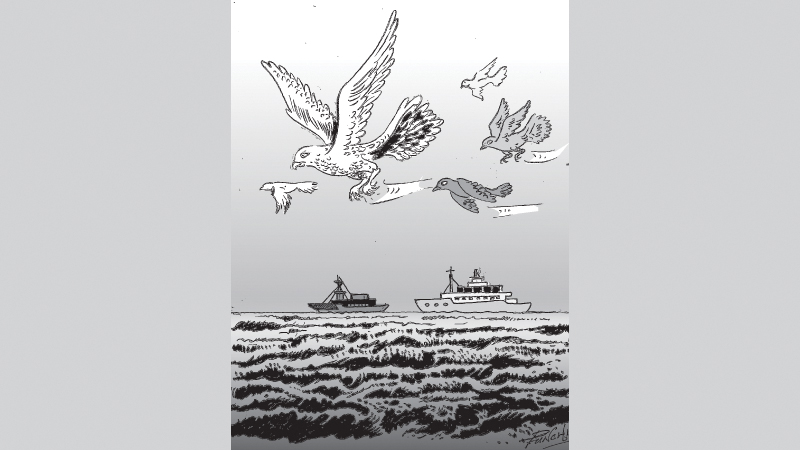 If you look at the sky on a clear day, you will see thousands of birds in flight. By looking at them, man also developed a keen desire to fly. Recent plane crashes in India and other parts of the world have raised concerns about the safety of air travel. In the absence of any other mode of fast travel, we are compelled to use planes to reach distant countries.
If you look at the sky on a clear day, you will see thousands of birds in flight. By looking at them, man also developed a keen desire to fly. Recent plane crashes in India and other parts of the world have raised concerns about the safety of air travel. In the absence of any other mode of fast travel, we are compelled to use planes to reach distant countries.
The concept of flying machines has been a human aspiration for many centuries, with early ideas stemming from observing birds and the forces of nature. While kites in ancient china and Leonardo Da Vinci’s designs were notable early steps, the first successful, powered and controlled flights are credited to the Wright Brothers who lived in the early part of the 20th century. Early flying machines include all forms of aircraft constructed before the development of the modern aeroplane in 1910.
If you look at the sky, you will see thousands of birds in flight without crashing to the terra firma. No wonder, man too wanted to fly like birds. Some attempts to fly by attaching two wings to a man’s arms and jumping from a mountain proved futile. Although man has invented super-fast planes, it seems that he has to learn a few more lessons from birds. The bird is still the consummate flying machine although it cannot carry passengers or cargo.
The skeleton of a bird is very strong and flexible. Big birds have air-filled hollows. The body of a bird is very light. An average pelican weighs only about 23 ounces. In addition, birds have air sacs throughout the body. The circulation of air within the body of a bird acts as a radiator or a cooling system. This helps the bird to expel the excess heat and humidity while exchanging carbon dioxide for oxygen. Such a cooling system is necessary for any airborne machine. A plane in flight demands greater intensity of effort. The same is true with birds. A flying bird’s heart begins to beat rapidly.
A plane needs fuel. Similarly, a bird also needs it. It has a crop to store food that is to be injected into the stomach and intestines. Before flying, a bird takes care in filling its stomach with food. There is a story about a young robin that ate 11 feet of earthworms on the first day after leaving the nest. Even crows eat more than their own weight in food per day.
Pectoral muscles
A plane is equipped with motors that run on fuel. The motor of a small plane is roughly half its weight. The pectoral muscles of a bird pull down the wing against the air to drive it. On the other hand, the neck of a bird is very flexible. Its flexibility helps the bird to reach any part of the body easily. The bird does so while balancing the body when flying.
The feathers of a bird help it to combine lightness with strength. Each shaft sprouts forth barbs on either side to form the vane of the contour feather. As the bird grows old, some of its feathers fall allowing new ones to replace them. Although we see birds flapping their wings, it is somewhat like a boatman using the oars to drive the boat. Very often the wings often touch each other in front of its breast.
If you look at it objectively, birds are ahead of planes. Like planes birds too reduce their speed when landing. While planes put out their wheels, birds fan out their tails as well as their wings. Web-footed birds such as geese brake with their long necks to aid in steering and balancing. A bird’s tail is intended for steering up and down. Like pilots, birds also make mistakes. Many birds have been killed in crashes. However, birds try to correct their mistakes at the last moment.
Hummingbirds
The takeoff is important for planes and birds. Some big birds need a runway. Small birds do not need a runway to gain speed. Today, planes have changed their shapes. Birds too have adopted many wing shapes. You may have seen pointed wings of certain birds such as falcons and hummingbirds. Gulls and albatrosses have narrow pointed wings for gliding and soaring over the open ocean.
Apart from being perfect flying machines, birds have enriched the English language. When a prisoner or a fugitive has escaped, we say the bird has flown. The expression was famously used by King Charles I of his failed attempt to arrest the five members in the House of Commons who had escaped.
When you say a bird in the hand is worth two in the bush, you mean that it is better to accept what you have than trying to get more and risk losing everything. However, the saying, “One bird in the hand is worth more than two in the woods” was parodied by the American actress Mae West when she said, “A man in the house is worth two in the street.”
The saying, “A bird never flew on one wing” is frequently used to justify a further gift, especially another drink. A bird of freedom is the emblematic bald eagle of the United States. ‘The birds and the bees’ is an expression used for basic facts about sex and reproduction. When you say ‘birds in their little nests agree’, you mean that young children should not argue among themselves.
The popular saying “Birds of a feather flock together” means that people of the same character (usually unscrupulous) associate together. When someone says, “Little birds that can sing and won’t sing must be made to sing” they mean that those who refuse to obey or cooperate will be forced to do so. Sometimes we say, ‘there are no birds in last year’s nest’ to indicate that circumstances have changed.
Whenever you board a plane, think of the birds that are nature’s wonderful flying machines.









